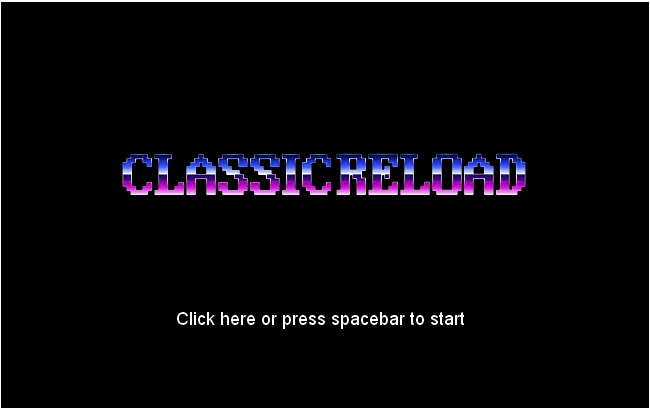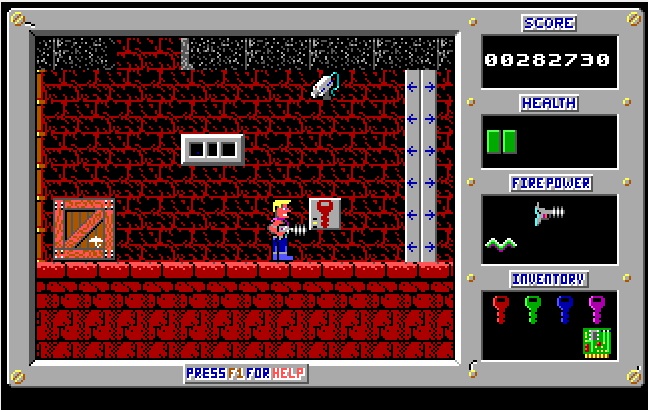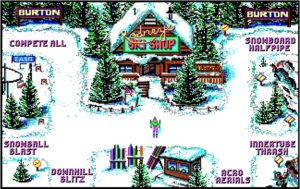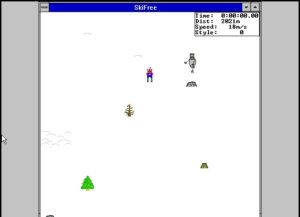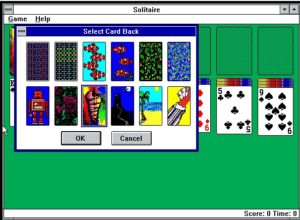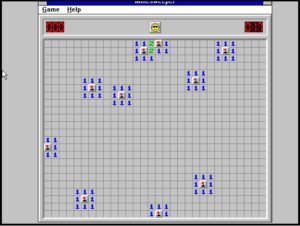Classic Reload: Classic childhood memories
There are only a few times in your life when you truly get to re-live your youth. For me, one of those times was the recent discovery of the Classic Reload website.
The Classic Reload website states that it was established for the preservation of over 6,000 retro games that were available on computer OS interfaces, such as MS-DOS, which have now been abandoned.
The website also says something that really appealed to me, “there is just something magical about the old DOS games that just brings back memories and takes many of us back to our childhood or a time when things were simpler and just as much fun without all the animation that is the standard these days…There was so much change in the ’80s and ’90s with DOS games and many seem to be all but forgotten.”
This appealed to me as my first experience with computers growing up were with the MS-DOS operating systems and the games on them, which are now available on the Classic Reload website. Like with most fantastic discoveries, I came across this site by accident, when I was trying to find a site to play PS1 games online. There were six games that I played all the time growing up on my family’s old computer that I managed to find on the Classic Reload website:
1. Duke Nukem
A side-scrolling, 2D platform game featuring the adventures of the hero, Duke Nukem, the game’s objective was to defeat Dr Proton, a madman determined to take over the world with Techbots. The game was released in 1991 and set in the then-not-to-distant future in 1997. To eventually defeat Dr Proton, you’d have to play through plenty of levels, increasing Duke’s health through soda and turkey, gaining random inventory such as: claws to grapple across ceilings, boots to jump higher than normal, more ammo for his atomic pistol, and an access card resembling a computer chip to shut off electric barriers, as well as coloured keys to open doors. You could also get points through collecting random items such as footballs, radios, flags, balloons, floppy disks and the letters “D, U, K, E”.
Duke Nukem was set as a trilogy, with the first episode, Shrapnel City, automatically available on MS-DOS computers, so my experience with Duke Nukem was playing Shrapnel City over and over. I loved the challenge, the story and the overall goal of having to defeat a bad guy. I always wanted more and with the Classic Reload website, I finally got to play the entire trilogy, however the fact that the setting and graphics were pretty much the same across all three games was disappointing. As an adult, I’d also like to know who decided players could collect points through such random items like radios, footballs and balloons.
2. Commander Keen
Much like Duke Nukem (Shrapnel City), the first episode of Commander Keen in Invasion of the Vorticons (Marooned on Mars), was automatically available on MS-DOS computers and released in 1990. It was also set as a trilogy, with users having to purchase the other two episodes, so my experience with Commander Keen growing up was limited to Marooned on Mars, nevertheless, I enjoyed playing it.
Again like Duke Nukem, Commander Keen is a side-scrolling, 2D platform game. In Marooned on Mars, eight-year-old Billy Blaze, a child genius, builds a spaceship out of parts around the house. After his parents have left the house and the babysitter has fallen asleep, Billy puts on his brother’s football helmet to officially become Commander Keen, gets in his spaceship and flies off to Mars to explore. While he is gone, the Vorticons steal the four most important parts of the spaceship and hide them in martian cities, the parts are:

Cut Intro Scene showing the Vorticon Guard stealing the ship’s parts
- Joystick for manual flight control (taken from his brother’s video game)
- Car battery for electrical systems power (taken from his mother’s car)
- Vacuum cleaner for an Ion propulsion unit (taken from the kitchen and heavily modified)
- Everclear for fuel (taken from his father’s liquor cabinet)
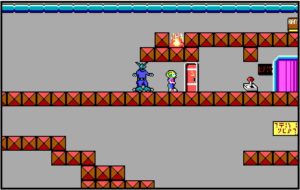
A Vorticon Guard standing behind Keen who is about to retrieve the joystick. (Screenshot via Classic Reload)
The overall goal of the game is to retrieve the four missing parts and get Billy back to Earth before his parents come home. To do this, you take Keen through the various martian cities to collect points through lollipops, pizza, Pepsi, teddy bears and books. Much like Duke Nukem, I also enjoy the story, challenges and overall goal of Commander Keen.
There are great little nooks and crannies, a variety of colour present in the martian cities, and even a secret city. The GOD mode cheat also makes playing the game a lot easier, the ending of the game also sets up the premise of the second episode, The Earth Explodes.
As much as I love Marooned on Mars, what I loved even more was the chance to finally play the other two episodes. The Earth Explodes had a similar set-up. While Marooned on Mars was set on Mars and the martian cities were colourful but mainly consisted of a red colour palette, The Earth Explodes was set on the Vorticon Mothership, which was hovering above Earth ready to destroy it, with a mainly blue and grey colour palette. I actually enjoyed The Earth Explodes more as the overall goal was more challenging, however I appreciated Marooned on Mars’ simple format. I actually didn’t enjoy the final episode, Keen Must Die, as I felt it was too different to the previous two episodes.
3. Ski or Die
This game is different to Duke Nukem and Commander Keen. Released in 1990, it’s a winter sports game, rather than an adventure game with an overall goal, which was again available on MS-DOS. It consists of 5 mini games: Snowball Blast, Downhill Blitz, Acro Aerials, Innertube Thrash, and Snowboard Halfpipe–which can be played individually or sequentially as a competition.
I loved this game due to its competitive and sporty nature, as well as the variety provided through its mini games. I also loved the ability to play the games sequentially and loved to pretend that I actually was in a skiing competition, albeit virtually.
4. SkiFree
Another skiing game, however this one isn’t a sports game or competitive, it is a simple game with a simple objective–skiing down an endless hill and avoiding as many obstacles as possible. There are three modes–slalom (skiing between two sets of flags to get the best time), freestyle (skiing and getting points by doing tricks), and tree slalom (skiing and avoiding obstacles such as trees, dogs and other skiiers). The twist with SkiFree is that once the skiier gets past 2,000m, an abominable snow monster appears and chases the skiier, eating them once it catches up to them.
I didn’t play this game all that often but I enjoyed it when I did. While I appreciated the simple graphics of the game, I think the simplicity of the objectives was too boring for me. Although I did try to avoid the abominable snow monster, and how many games do you know of where the protagonist is eaten after they reach their goal?
5. Solitaire
Solitaire is such a classic that it’s still available on today’s laptops and computers, however the MS-DOS version of Solitaire will always hold a special place in my heart as it is where I learned how to play the game.
There are two things I remember about playing the MS-DOS version of Solitaire growing up–the fun I had picking from the random decks available and how rare it was when I would win (and the frustration I felt that my brother always managed to win when he played).
As time has gone on, Solitaire has evolved into multiple forms with better graphics and the option of being given hints, which would have made my life easier growing up if this was available in the MS-DOS version.
6. Minesweeper
Minesweeper was another simple game I enjoyed playing growing up. The objective is to uncover all the squares on the field that don’t contain mines without blowing them up. Uncovering the squares is done by logic, clicking on the board or field will reveal what is hidden beneath the chosen square, if it’s not a mine it will either be blank or a number telling the player the number of mines adjacent to the uncovered square. A player wins once all the blank squares have been uncovered without the mines blowing up.
Sometimes I’d win and sometimes I wouldn’t, like with any other game. One way I’d “cheat” was by making the board a custom large size with the minimum amount of mines (10), this way there were more blank squares than mines. I found this was very effective, and I loved that the yellow face would be smiling and wearing sunglasses, as if it was on holiday, once I’d win.
Over the years there have been many variations, the most notable variation is the Windows 7 version which came in colour with sound effects, and provided the options of mines and flowers. But this one will always be my favourite.
So those are my favourite MS-DOS games from my childhood that I am re-experiencing the joy of playing as an adult thanks to the Classic Reload website. I’m hoping that I’ll also find PS1 game preservation websites too. If any of you find some, let me know.
What were your favourite MS-DOS/computer games growing up? Let us know by commenting below.

